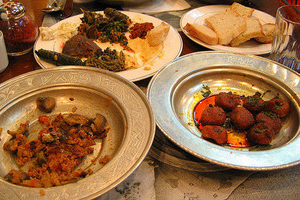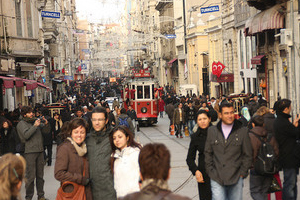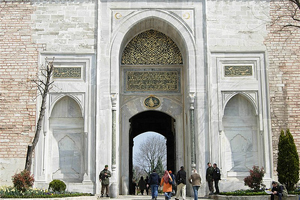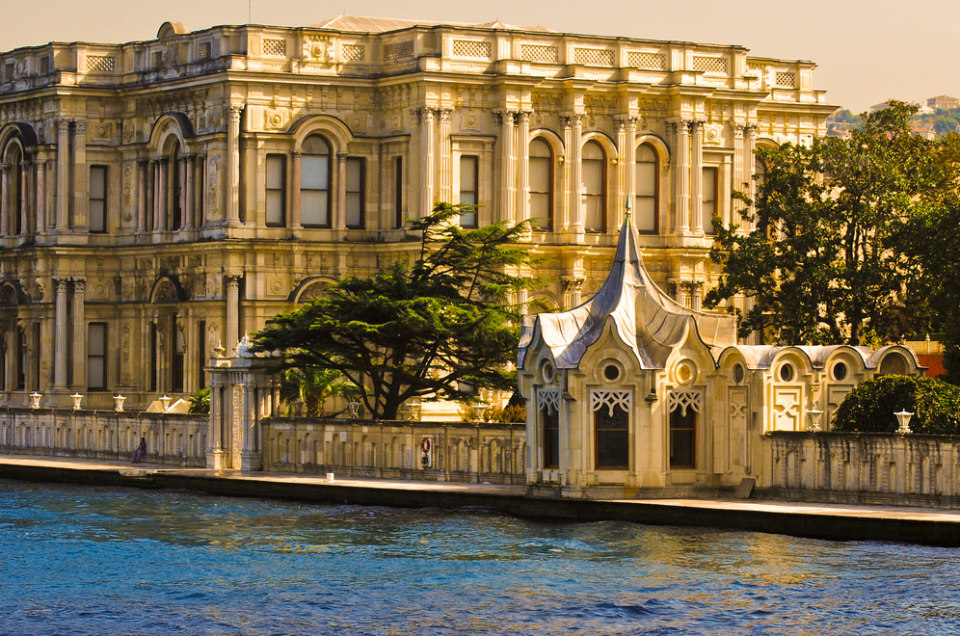Surging forward without forgetting its past, Turkey sits at the crossroads of time, culture and competing philosophies.
It was a warm, wet night in Istanbul. There, sipping on big mugs of Efes beer at a sidewalk bar on a lively back lane near the city’s famous Istiklal shopping street, a misty rain falling, creating a light patter on the broad umbrella that shielded our table, we talked about world affairs. As a burst of music poured down the lane from a rock bar across the way, Taylan Tasbasi, my rakish, urbane Turkish friend explained his country’s unique position in the region. “Turkey is the bridge,” he said, taking a sip of his frothy brew. Abutting Iraq and Syria along its eastern and southern borders, Tasbasi observed, Turkey sits on the edge of the Middle East, at the periphery of the ongoing Arab Spring. “It’s not east or west. It’s both Europe and Asia. Which puts us in an interesting, awkward, strategic position.”
Bringing together fascinating elements from the past with a red-hot economy that’s propelling the country into the future, Turkey is—geographically, historically and politically—a nation that sits at the crossroads of competing philosophies and ideologies.
Conservative in the arid east and liberal in the coastal west, with a principal city that straddles two continents (and is home to more than 1,000 mosques while maintaining an undeniably European feel), Turkey is a lesson in contrasts, not to mention a captivating place for a road trip—especially when that trip’s taken with a Turk who has a friend in every town.
We spent the first few days in Istanbul, taking time to tour the city’s many famous attractions. On the European side of the Bosphorus—the strait that divides the city and the two continents—we visited Topkapi Palace, the hilltop redoubt from which the Ottomans ruled their vast empire for the majority of its six-century existence, taking in the harem, the Tower of Justice, and its various galleries which feature impressive collections of treasures and religious relics. We wandered amongst the thousands of little shops in the Grand Bazaar and hundreds more at the Spice Bazaar, browsed through stores selling ornately handmade Turkish carpets, and spent some time inside the famous Blue Mosque and Hagia Sophia.
At the latter, Tasbasi pointed out a rare site—the remains of both Christian and Islamic worship, coexisting side-by-side. Now a museum, Hagia Sophia’s massive Byzantine dome is almost vertigo-inducing. Dedicated in the fourth century as the patriarchal cathedral of Constantinople, the giant building was rededicated as a mosque when the Ottoman Turks took control of the city in 1453. In the process of the subsequent retrofits (which included adding minarets, a minbar and a mihrab), the Ottomans left its magnificent mosaics—which often depict Jesus and the Virgin Mary—intact, simply plastering them over, something that, ironically, preserved them for centuries.
The next day, we crossed the Bosphorus to the Asian side of Istanbul, sipping hot tea from tiny little glasses on the ferry, then browsing, umbrellas in hand, through vibrant fruit and fish markets on the other side. Having taken in two continents in one day, we felt that we’d earned our lunch, and settled in for a feast at Çiya, a famous place that has been featured in publications from Food & Wine to the New Yorker. Requiring multiple visits, the waiter spread an astonishing array of Turkish and Middle Eastern culinary delights on our table, from kebabs to hummus and Baba ghanoush to a delectable shepherd’s cheese that I will never, ever forget.
Filled up on Istanbul, the two of us struck out for points beyond, taking a short flight to Izmir, a city of some three million (historically and Biblically known as Smyrna) and renting a car. After taking a brief tour of the city’s archeology and ethnography museums, Tasbasi dialed up his good friend Fareed, who agreed to meet us at an open-air café on the Gulf of Izmir for lunch. A man of Kurdish extraction, Fareed now shares little in common with his relatives who live back in the conservative eastern, Kurdish regions of the country, even making a joke of the notion that he should learn the language in case he ever returns to his family’s ancestral village (ha, ha). As a car ferry slowly made its way across the Gulf just to his right, Fareed, who lives nearby, explained that life is relaxed and easy in Aegean Turkey, and that, although Islam is the professed religion of most in the country, Turkey is far from anyone’s stereotype of an Islamic nation. “Christians, Jews, Muslims—we’ve all lived together for a long time here. We’re all friends and family,” he observed. Turkey has been officially secular since the birth of the modern Turkish republic under Mustafa Kemal Ataturk after the First World War. “Here, nobody asks you about your religion, ethnicity or lifestyle. We all live the same life and get along.”
After spending more time with Fareed—meeting his wife and her family at their small olive oil shop—we travel down the coast, spending the night in Kusadasi, the closest resort town to the magnificent ruins at Ephesus. The next day, we explored the Greek and Roman ruins, including the reconstructed Library of Celsus and the vast amphitheater. Tasbasi, a trained archeologist, steers clear of the shopworn jokes familiar to anyone who has ever taken a group tour, instead pointing out tiny details that reveal elements of everyday life in the city, including spots where the people of Ephesus would undertake their daily ablutions.
Bodrum, a few hours down the road, is our final stop on the trip. A town of shimmering white buildings that sits at the corner where the Aegean meets the Mediterranean, Bodrum is home to a famous Crusader castle and the ruins of the Mausoleum of Helicarnassus, one of the Seven Wonders of the Ancient World. It was also Tasbasi’s home for a number of years, and, after rolling into town and touring its lively pedestrian streets (which become even livelier on summer nights, making Bodrum one of the hottest party towns in the Mediterranean), we visit Tasbasi’s father-in-law, Askin Cambazoglu, who runs a dive shop and is one of the country’s foremost underwater archeologists. A longtime resident, Askin has seen the place grow from a small, sleepy sponge-diving village to a booming tourist destination, attracting divers, cruisers (who sail out from here on giant wooden sailboats called gulets) and partiers alike. “Thirty years ago, it wasn’t a cosmopolitan city. Now, there are buildings going up everywhere,” he tells me.
Later, Tasbasi takes me around his former neighborhood haunts—his old house, his favorite bars, even a cobbler friend who still makes shoes by hand in a one-room shop. The man greets Tasbasi enthusiastically, and they chat for a few minutes. As we walk away, Tasbasi explains to me that the man’s brother is a bigshot in town, a club owner of some repute. But, he adds, the cobbler doesn’t feel any envy—he’s happy to while away his days in his little shop. Here, at the end of the road, at the meeting of two seas, it seems a perfect metaphor for today’s Turkey and the things learned along our journey: two brothers, one performing a time-honored craft, the other unmistakably modern, living in an ancient city that’s been remade as major tourist destination. And both of them—much like people across Turkey—coexisting here in peace.



